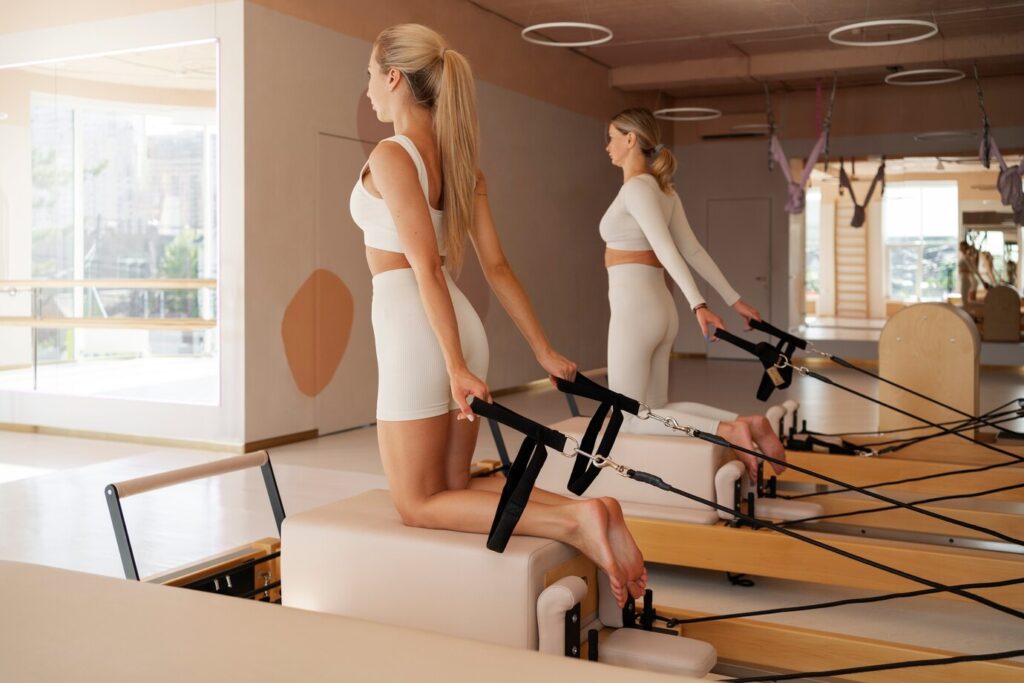The landscape of fitness has seen many evolutions over the years, each bringing forth innovative equipment and methodologies to enhance physical wellbeing and athletic performance. In the realm of mind-body exercise, one particular machine has steadily gained prominence due to its effectiveness and versatility—the reformer Pilates machine. This transformative piece of equipment has revolutionized the way individuals engage with Pilates, offering a unique blend of resistance and support that caters to a wide demographic.
The Origins of Reformer Pilates
Reformer Pilates finds its roots in the early 20th century, conceptualized by the founder of Pilates, Joseph Pilates. His vision was to create a machine that offers assistance and resistance through a variety of exercises, making Pilates accessible and challenging for people of all fitness levels. The machine’s sophisticated mechanics allow for a full range of motion and provide feedback to the user, promoting better form and alignment.
Components That Make the Reformer Stand Out
The reformer Pilates machine is distinguished by its bed-like structure, fitted with springs, a sliding carriage, ropes, and pulleys. These components work in concert to create a dynamic surface for exercising, engaging the core and stabilizer muscles more effectively than traditional workouts. It is this distinct configuration that enables users to perform exercises that both lengthen and strengthen the muscles, encouraging balance and flexibility.
Adaptability to All Fitness Levels
One of the most remarkable aspects of the reformer is its ability to adapt to various fitness levels. Its adjustable springs can be configured to provide more or lesser resistance, thereby modifying the intensity of the workout to suit beginners, intermediate users, and seasoned athletes alike. This scalability ensures that practising on a reformer remains challenging and beneficial as one’s strength and flexibility increase.
Reformer Pilates in Rehabilitation
The reformer’s gentle gliding motion and supportive structure make it a staple in rehabilitation settings. It offers a controlled environment for rebuilding strength and mobility in injured or weakened areas of the body. The ability to adjust resistance and support means that patients can experience a gradual reintroduction to movement, which is critical for a successful recovery process.
Full-Body Conditioning with the Reformer
A hallmark of reformer Pilates is its comprehensive approach to fitness. Unlike exercises that isolate specific muscle groups, the reformer engages the entire body. This holistic strategy not only yields more balanced muscle development but also enhances coordination and overall body awareness. Thus, a single session on a reformer can target a plethora of fitness components—strength, flexibility, and endurance—simultaneously.
Group Classes and Individual Training
Reformer Pilates has been enthusiastically received in both group class settings and individual training scenarios. In a class environment, users benefit from the camaraderie and motivation that comes with working out in a collective. Personal training sessions, on the other hand, allow for bespoke workouts tailored to individual needs, with precise form correction and attention from an instructor.
Catering to the Athletic Community
Athletes have found the reformer to be an invaluable cross-training tool that complements their primary sports training. The controlled movements help in injury prevention by focusing on core stability and muscle balance—critical components for peak athletic performance. Additionally, the reformer’s focus on spinal alignment and posture translates well into better form and efficiency in various sports.
The Mind-Body Connection
Reformer Pilates not only conditions the body but also engages the mind. The concentration required to perform each movement with precision helps users to forge a deeper connection with their bodies. The emphasis on breathing patterns and mindfulness during workouts furthers the integration of mental and physical health, which is a core tenet of Pilates.
Modern Innovations and Trends
While the fundamentals of the reformer Pilates machine remain true to Joseph Pilates’ original design, modern advancements have continued to enhance its functionality. Sleek designs, improved materials, and new accessories have kept the apparatus at the forefront of fitness innovation. Additionally, the incorporation of technology such as virtual classes has made reformer workouts more accessible than ever.
The Community of Reformers
A burgeoning community of reformer enthusiasts has developed around the world, with studios and instructors specializing in the modality. This community fosters a culture of continuous learning and sharing, with Pilates practitioners continually exploring the machine’s potential and devising new and challenging exercises.
A Sustainable Approach to Fitness
With a growing awareness of the importance of sustainable fitness practices, the reformer offers a low-impact workout that is easy on the joints and sustainable over the long term. This appeals to individuals who are looking for a form of exercise that they can maintain consistently without the risk of overuse injuries.
Future Prospects
As the fitness industry evolves, the reformer Pilates machine is poised to continue its ascent in popularity. Its ability to adapt to the needs of various populations—a trait that has made it a mainstay in the world of fitness—signals its potential for even broader adoption in years to come.
Conclusion
The rise of the reformer Pilates machine has marked a pivotal moment in the fitness sector. It epitomizes the ingenuity that Joseph Pilates brought to his practice, blending anatomy, physiology, and psychology into a cohesive and timeless approach to health. As the reformer continues to garner advocates across the globe, one thing remains clear: it is much more than just a trend—it’s a revolution in the making, shaping the future of fitness with each spring, pulley, and glide.







